You're using an outdated browser. Please upgrade to a modern browser for the best experience.

Submitted Successfully!
Thank you for your contribution! You can also upload a video entry or images related to this topic.
For video creation, please contact our Academic Video Service.
Video Upload Options
We provide professional Academic Video Service to translate complex research into visually appealing presentations. Would you like to try it?
Cite
If you have any further questions, please contact Encyclopedia Editorial Office.
Ali, A.; Hussain, T.; Tantashutikun, N.; Hussain, N.; Cocetta, G. Application of Smart Techniques for Sustainable Crop Production. Encyclopedia. Available online: https://encyclopedia.pub/entry/41667 (accessed on 22 December 2025).
Ali A, Hussain T, Tantashutikun N, Hussain N, Cocetta G. Application of Smart Techniques for Sustainable Crop Production. Encyclopedia. Available at: https://encyclopedia.pub/entry/41667. Accessed December 22, 2025.
Ali, Awais, Tajamul Hussain, Noramon Tantashutikun, Nurda Hussain, Giacomo Cocetta. "Application of Smart Techniques for Sustainable Crop Production" Encyclopedia, https://encyclopedia.pub/entry/41667 (accessed December 22, 2025).
Ali, A., Hussain, T., Tantashutikun, N., Hussain, N., & Cocetta, G. (2023, February 25). Application of Smart Techniques for Sustainable Crop Production. In Encyclopedia. https://encyclopedia.pub/entry/41667
Ali, Awais, et al. "Application of Smart Techniques for Sustainable Crop Production." Encyclopedia. Web. 25 February, 2023.
Copy Citation
Smart farming, often known as smart agriculture, is a farming practice that uses sustainable methods to meet the population’s growing food needs while minimizing negative effects. The global community has embraced it and is supporting it. The fundamental tenet of this strategy is to effectively utilize the resources at hand for sustainable output while lowering the expenses of all activities associated with the agricultural industry. Smart agriculture represents the use of technologies such as sensors; the internet of things (IoT), which is a network of computing devices; artificial intelligence; and robotics to assist traditional agriculture and convert it into a smart and sustainable agriculture.
smart farming
sensors
IoT
Data mining
precision agriculture
1. Smart Irrigation Techniques
The water cycle has been substantially altered by climate change, which has also increased the severity of droughts [1]. Hence, efficient water use in agricultural systems is a basic concern in the current scenario. The losses of water under limited water availability have gained a lot of interest in these days, when a major part of the world is susceptible to drought each year. Traditional and manual irrigation systems fail to accomplish water-saving goals, and are unable to supply water efficiently [2]. Smart irrigation is a technique which is countering this problem efficiently by not just providing efficient water use, but also saving it for the future [3]. Additionally, smart irrigation reduces the input costs, which provides relief to the farmers [4]. Manual irrigation requires manpower for daily observations and scheduling irrigations by observing plants or crops in fields, but a sensor-assisted irrigation system detects soil moisture available in the soil profile and initiates the irrigation, making irrigation control better than the manual [5], whereas a decision-support-system-assisted irrigation system integrates soil moisture sensors and climate sensors to observe water demand and control irrigation application for crops (Figure 1). The development of accurate and effective irrigation systems has been aided by the revolution in decision-support-assisted irrigation systems, brought about by advancements in technology [6]. This not only incorporated soil moisture and climate sensors, but also an internet-assisted cloud system for real-time data observation. Dynamic simulation models are linked to examine the effects of irrigation on crop growth and productivity estimation. Moreover, in accordance with data analysis and yield predictions, an irrigation quantity has been finalized and is supplied through an automatic irrigation control system. A remote control or mobile application [7] is also linked up with this system for easy understanding and usage of the modern irrigation hub. A scheme of an advanced irrigation hub is presented as of Figure 2.
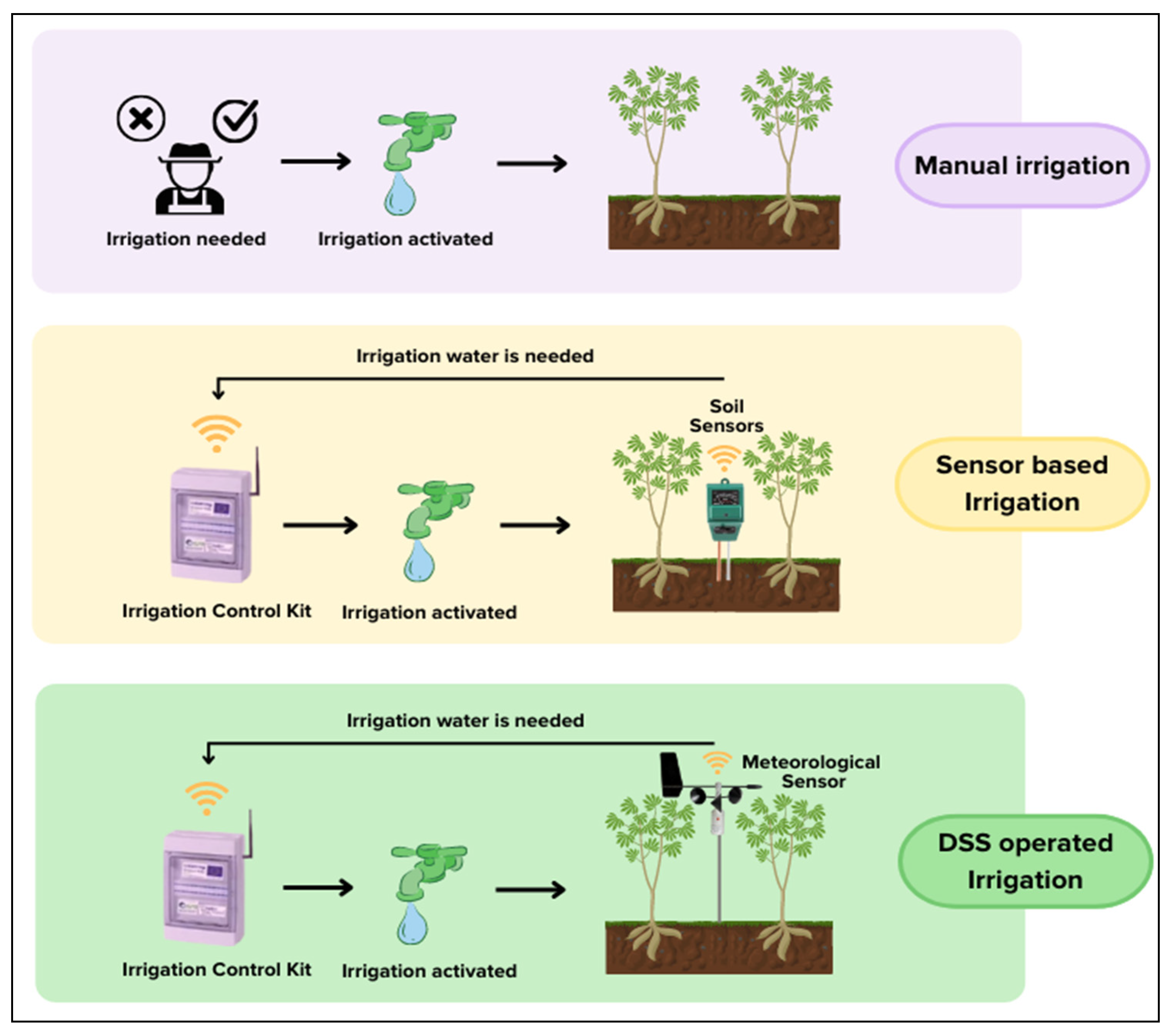
Figure 1. Manual versus smart-sensor-based and decision-support-system-assisted irrigation applications.
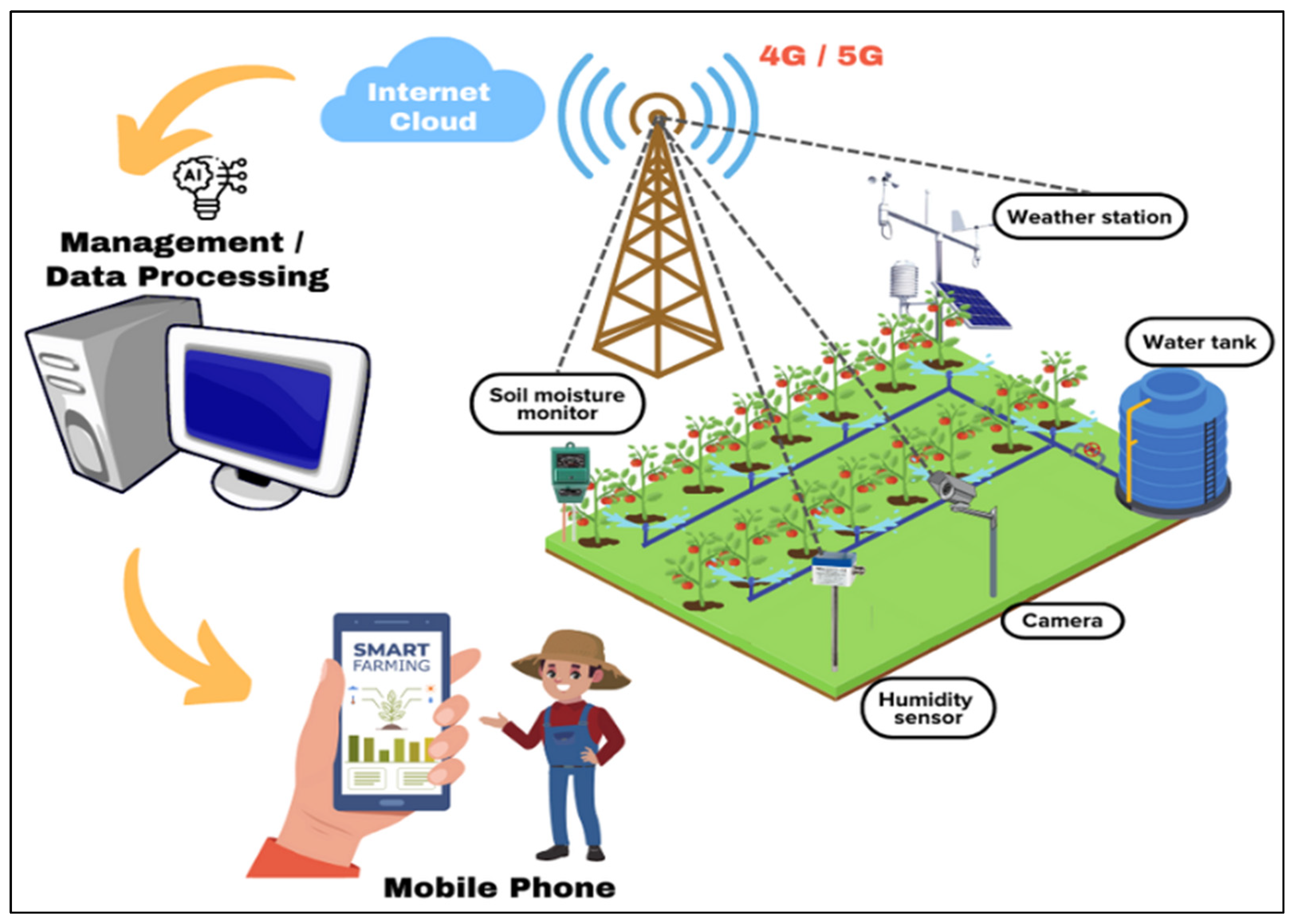
Figure 2. Advanced irrigation hub assisted with real time weather and moisture sensors and decision support systems.
Smart irrigation consists of various steps and schemes, which are illustrated in Figure 3, which, in combination, make this technique a revolution in agricultural production systems. Various techniques were developed and utilized to achieve efficient irrigation goals in smart agriculture systems. Automatic drip, sprinkler, real-time moisture-sensor-assisted, and predictive irrigation schemes are commonly being utilized [8]. Various advanced irrigation techniques haven been developed and improved with time, and some of those are indicated in Table 1 with their methods of data usage and objectives. Padalalu et al. [9] presented a control system for an automatic irrigation, aiming to record and control the irrigation needs of the crop. Several variables, such as humidity, soil temperature, and pH, were observed by installing sensors. Additionally, a Naive Bayes algorithm was applied to estimate the exact water demand of the crop. Weather forecasts were observed to monitor the quantity of applied water to crops and the model of this intelligent irrigation system assured the intuitive use of water. An irrigation system based on the Support Vector Regression method was developed and proposed by Xie et al. [10]. The system was composed of an irrigation demand estimation component to evaluate the energy and time needed for carrying out the subsequent operations. It was also composed of a solar energy prediction component for forecasting the solar energy.
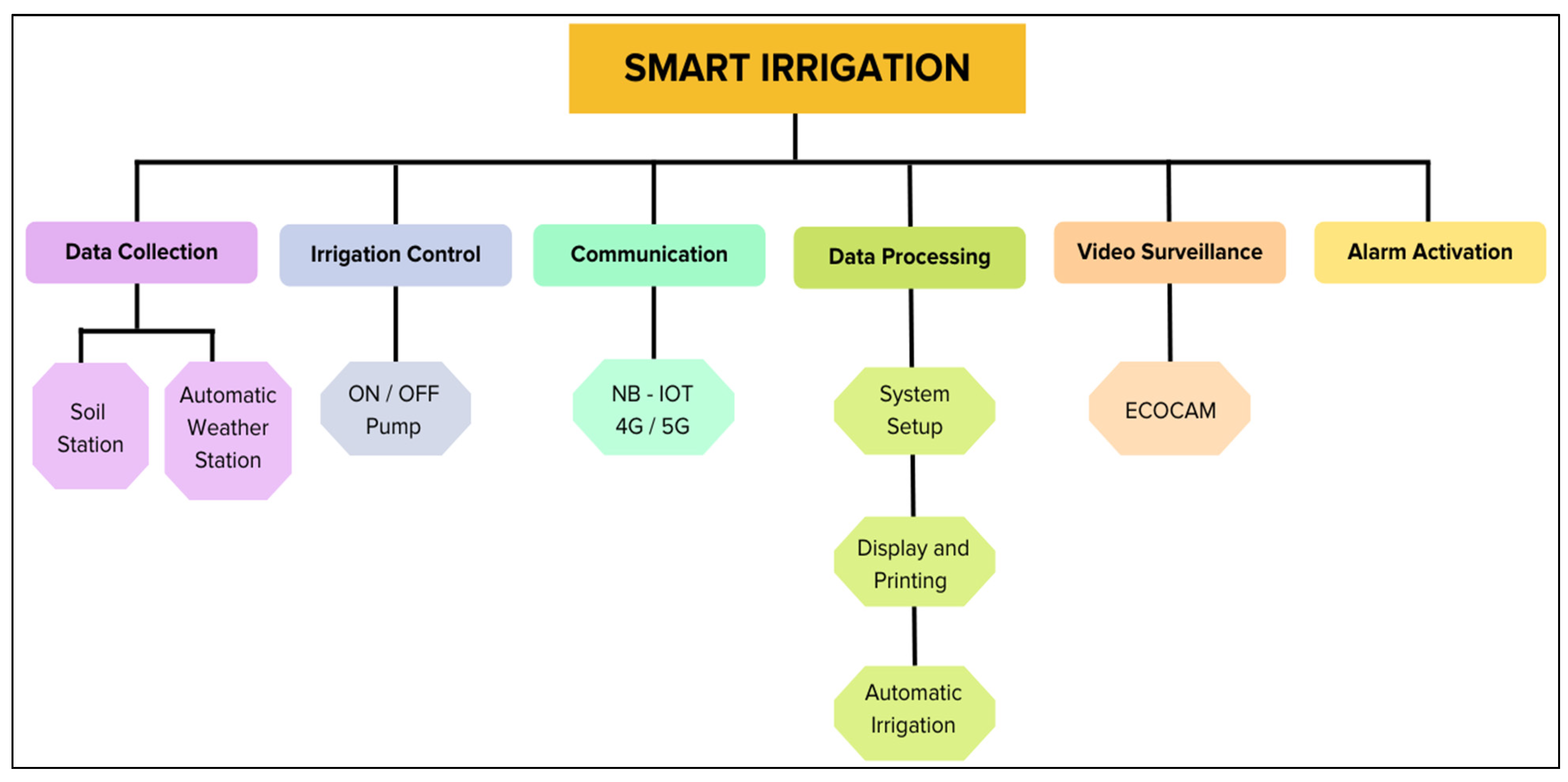
Figure 3. Flow diagram of various components and processes of smart irrigation systems.
Numerical Weather Prediction (NWP) and the Time of Use price model (TOU) were employed, which exhibited clearly that the water resources and the amount of energy can be saved was up to 7.97%. Following the forementioned findings, costs declined by an estimated 25.34% when subjected to a comparison with the soil-moisture-based irrigation system. To maximize crop yields and to conserve an excess of water, Goumopoulos et al. [11] devised a decision support system based on a Wireless Sensor/Actuator Network (WSAN). The system was positioned to observe irrigation in a greenhouse. Real-time monitoring for precision irrigation was provided by the developed system in it. Various sensors were considered, such as soil moisture sensors, humidity sensors, and temperature sensors, in strawberry field. The results from this research depicted a 20% decreased water consumption as compared to a traditional irrigation system. In another study, Zhang et al. [12] performed experiments in the laboratory and in the greenhouses. A Fuzzy Logic-based irrigation control system was developed, and information was gathered from soil moisture sensors to decide the irrigation application time. The system came out to be a successful one in tackling the uncontrolled lengthy irrigation schedules. Peng et al. [13] developed an irrigation system using WSN and Fuzzy Logic to save water. The system was composed of four parts: the cluster of sensor nodes, coordinator nodes, two variables as inputs (soil moisture error and the rate of change of the error), which provided watering time as an output. An irrigation controller was also used for automatic watering and monitoring of the pipe network, which eventually helped in precise and quick calculation of amount of water required in irrigation.
An automatic irrigation system was developed by Anand and Perinbam [14] that consisted of four different parts. The first part was sensor nodes, which were collecting the temperature and moisture readings. The coordinator node, as a second part, the irrigation controller, as a third one, which was based on Fuzzy Logic to monitor the watering and the time of its application, and the irrigation pipe network, as the last component of their proposed system. The Fuzzy Logic-based controller was accounting for numerous activities in the automatic irrigation system. One such use was monitoring the water level in the tank. Likewise, it was also responsible for examining the amount of rain, the atmospheric temperature, and the wind speed. All the information which was under investigation, whether the field condition or the system itself, was collected and made available for the farmer through the GSM Module [15]. The Fuzzy Inference System, another smart irrigation system for monitoring the evapotranspiration (ET) and irrigation, was developed by Mousa et al. [16]. Goals were accomplished by using the specific algorithms such as the estimation of ET, soil moisture observations, required irrigation’s estimation as per reference ET (ET0), monitoring irrigation schedule, and the time of irrigation. Drip and sprinkler irrigation systems can be linked and applied successfully using this system. Moreover, results indicated the fuzzy model as an intelligent and quick implementation for recording the evapotranspiration and water needs of the crop field.
Table 1. Techniques to achieve efficient irrigation goals in smart agriculture systems.
| Techniques | Used Data | Objectives | References |
|---|---|---|---|
| Naive bayes algorithm | Soil, temperature, and humidity sensor data | Precision of water and fertilizers used | Padalalu et al. [9] |
| Optimization model and irrigation estimation algorithm | Soil moisture data, weather information data and solar energy data | Irrigation cost management | Xie et al. [10] |
| DM algorithms | Sensor’s data (air, soil temperature, and humidity) | Zone specific irrigation management | Goumopoulos et al. [11] |
| Fuzzy logic | Sensor data (soil) | Irrigation management | Zhang et al. [12] |
| Fuzzy logic | Sensor data (soil) | Irrigation management | Peng et al. [13] |
| Fuzzy logic | Meteorological parameters | Irrigation management | Anand and Perinbam [14] |
| Fuzzy logic | Climatic parameters | Irrigation management | Mousa et al. [16] |
2. Smart Monitoring of Insects and Pests
In modern agriculture production systems, modern techniques are being utilized for smart monitoring and control of insects and pests. To spot six parasites in an apple orchard, Boniecki et al. [17] suggested a neural classifier. The names of the parasites were apple blossom weevil, apple clearwing, codling moth, apple leaf sucker, apple aphid, and apple moth. The abovementioned classifier was established on 23 parameters, which included form and color characteristics. The former was 7 and latter was 16 in number. Decisive results were obtained by considering the Multi-Layer Perceptron Neural Network topology in the peach orchard. Rodrigues et al. [18] used an extension of Fuzzy Logic, named Interval Fuzzy Logic, to predict the appearance of the parasites. Data was captured using temperature and humidity sensors, and processed by Interval Fuzzy Logic, which ultimately provided the warning levels. Different hardware components, such as the Arduino platform and different sensors, were used to develop this system. A demonstration of a drone-assisted evaluation of insects and pests in enabling the timely implementation of actions to remove the high-risk infestations is presented in Figure 4. In addition, AgroDSS for agriculture, a new decision support system, was developed to learn the pest population by Rupnik et al. [19]. This system relied on data mining approaches, and the implemented tools used were supervised learning, unsupervised learning, and time series analysis. The data was gathered by Trap View and allowed an efficient pest observation by using insect traps in the vineyards and orchard. When it came to deal with the missing data, linear regression was used by Da Silva et al. [20], who also applied logistic regression while inspecting the results obtained from the land and the monthly surface temperature. They calculated “accumulated degree-day” by using a meteorological satellite to reduce disease risks by mapping the pests. A significant relationship was observed between the accumulated meteorological stations values and satellite values.
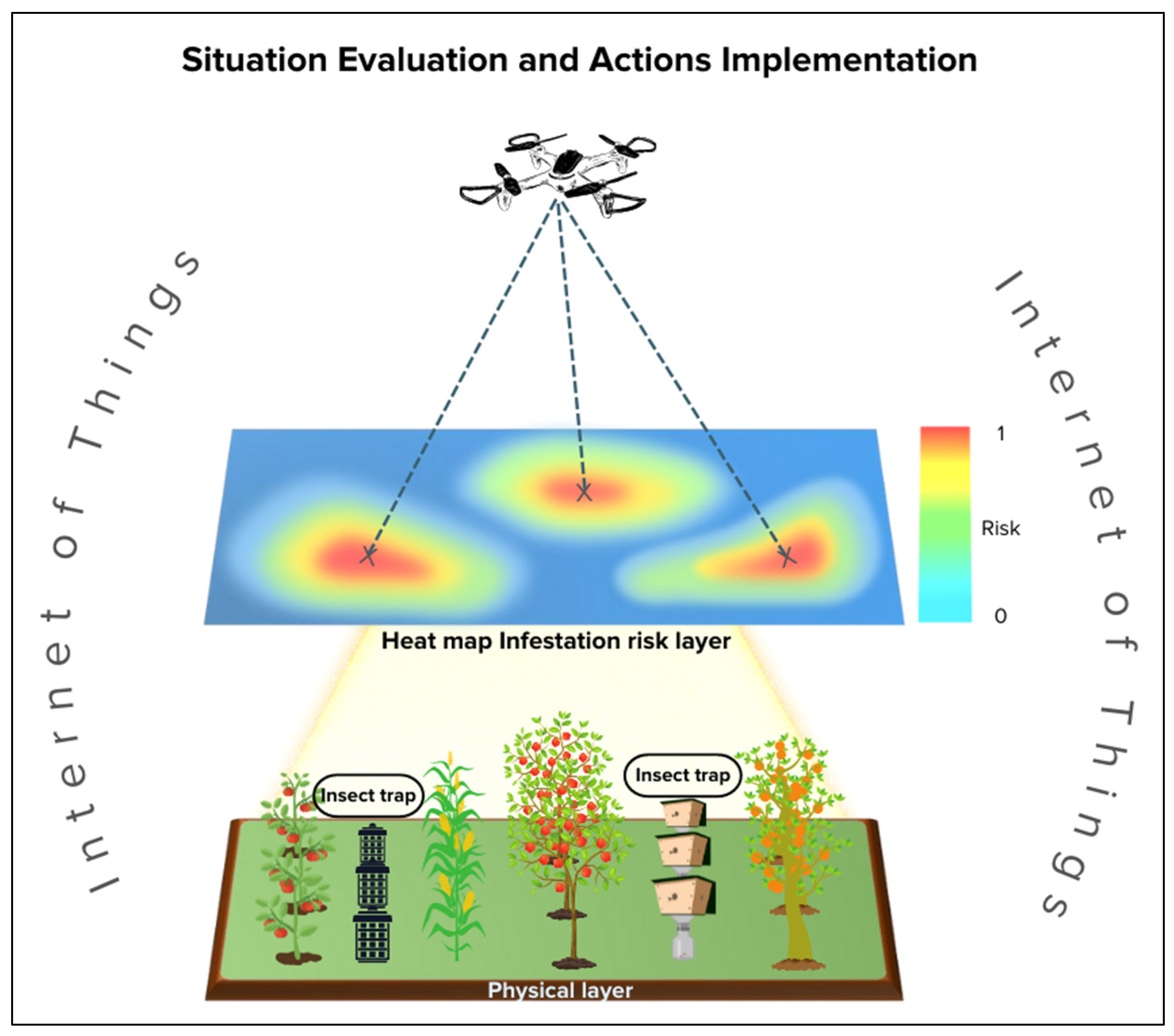
Figure 4. Evaluation of pests and encountering remedies in smart farming.
The crops lines algorithm, in association with the Convolutional Neural Network, was proposed by Bah et al. [21]. The aim was to pin down weeds in various crops, such as beet, spinach, and bean fields. The research work was also assisted by the drone images, which were taken about 20 m height. The best accuracy in results were achieved in beet field. However, the research work also mentioned a few hardships concerning the right detection of the weeds. This usually happened when the plants were at early growth stage or when there was a less distance between weeds and crop. Various techniques for smart pest monitoring and its related goals are described in Table 2. For an early alert and recommending necessary control measures, Tripathy et al. [22] presented a real-time Decision Support System. The main objective was observing and predicting the pest and disease status in the field. Furthermore, numerous DM techniques have been used in groundnut crops, which were based on some climatic and weather parameters. The experiment was using the Naive Bayes method with Gaussian distribution. Rapid Association Rule Mining, in conjunction with the aforementioned technique, was performed to search out the multiple weather correlations with other related parameters. Doses of pesticides are an important indicator for the betterment of the crop, and they were predicted by Viani et al. [23] by using Fuzzy Logic. Weather data (soil temperature and moisture) were considered, and the risk of infection was counted by examining developmental stages of the plant and the fluctuating environmental conditions. By combining hydroponics with IoT, Alipio et al. [24] developed an efficient hydroponic system, which assisted in providing the right nutrient’s type and amount at the best suitable time. A Bayesian Network (BN) prediction algorithm was implemented to obtain the maximum of the right decisions to control the system. The three main components of the developed system were a data analysis module, a web interface, and sensors. The sensors used were controlling the electrical conductivity, managing pH, monitoring light intensity, recording humidity, and water temperature. For displaying the data and to control the system, there were two operational websites for this purpose. A clear increase in the yield obtained with the automatic control was observed as compared to the manual control system.
Table 2. Techniques and goals for monitoring pests and input management in smart agriculture.
| Data Used for Analysis | Techniques | Goals | References |
|---|---|---|---|
| Digital image of pests | Neural Networks | Pest prediction in apple orchard | Boniechki et al. [17] |
| Temperature data and humidity data | Interval Fuzzy Logic | Prediction of pests and diseases | Rodrigues et al. [18] |
| Pest data | Random Forest | Pest dynamics and population prediction | Rupnik et al. [19] |
| Meteorological satellite data and in situ meteorological data | Linear and Logistic Regression | Pest and disease mapping and detection | Da Silva et al. [20] |
| Vegetable images taken by drones | Convolutional Neural Network | Weeds identification in crops such as spinach and beans | Bah et al. [21] |
| Temperature, humidity, and soil moisture data | Naive Bayes Method with Gaussian Distribution | Pest predictions | Tripathy et al. [22] |
| Soil moisture, leaf wetness and soil temperature data | Fuzzy Logic | Specific dose prediction for pests | Viani et al. [23] |
| Sensor data (pH level, electrical conductivity, light intensity, etc.) | Bayesian Network | Crop growth management in hydroponic farm | Alipo et al. [24] |
3. Smart Disease Management
Diseases in crops are devastating in terms of yield and deteriorating the quality of the produce. Numerous solutions are out there in the market and industries [25][26], yet there is a need to think or perform smarter, to remove the excessive damage to the final product, and to enhance the outcome in terms of the revenue. In smart agriculture, the focus is on the classification of the diseases and its detection precisely at any stage [27], so that smart decision making can be conducted and the excessive failure in the yield and quality can be avoided. A modified model image of smart disease management using normalized difference vegetation index (NDVI), drone, and imaging techniques is presented in Figure 5. Singh et al. [28] opted for the image processing technique using a genetic algorithm. In his research work, he observed and managed several leaf diseases on various crops, achieving the precision percentage of 88.99%. Likewise, 89.56% precision was achieved by Warne and Ganorkar [29] while detecting the leaf diseases in cotton crop. They classified the diseases as red leaf spot and Alternaria leaf spot of cotton using a neural network algorithm. Similar research was performed by Revathi and Hemalatha [30] while working on a cotton crop. Image processing was assisted by the neural network to detect and classify cotton diseases. In this research, they classified Fusarium wilt and leaf blight with the high precision of 98.1%. Image processing by employing Support Vector Machine was performed by Bhange and Hingoliwala [31], Yao et al. [32], Jian and Wei [33], and Dubey and Jalal [34] to target teyla in pomegranate, rice blast and rice sheath blight in rice, downy mildew and brown spot in cucumber, and apple rot, scab, and blotch in apple. The results from these research studies have indicated the precision percentages as high as 82%, 97.2%, 94% and 93%, respectively, as represented in Table 3.
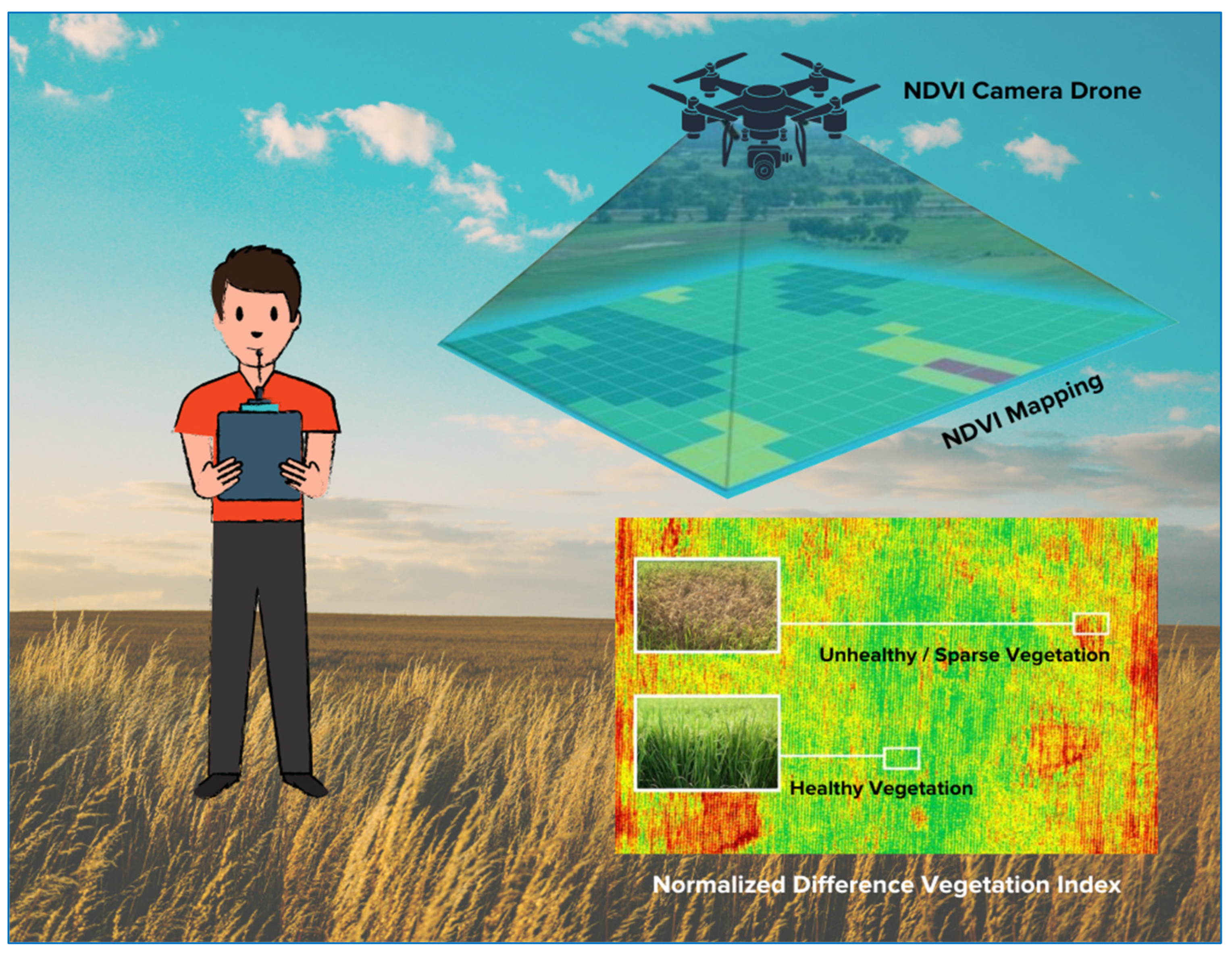
Figure 5. Smart disease management by using normalized difference vegetation index (NDVI), drone and imaging techniques. Modified figure where the drone mapping image on the top right was obtained from: https://www.futurefarming.com/tech-in-focus/pain-points-of-nitrogen-applications-how-drone-data-helps/, accessed on 14 June 2022.
Table 3. Methods and precision percentage for detecting and classifying diseases in smart agriculture.
| Methods | Diseases | Precision | References |
|---|---|---|---|
| Image Processing + Genetic Algorithm | Leaf diseases on different crops | 88.99% | Singh et al. [28] |
| Image Processing + Neural Networks | Cotton leaf diseases, red leaf spot, Alternaria leaf spot | 89.56% | Warne and Ganorkar [29] |
| Image Processing + Neural Networks | Cotton leaf spot disease, Fusarium wilt and Leaf blight | 98.1% | Revathi and Hemalatha [30] |
| Image processing + Support Vector Machine | Pomegranate disease: teyla | 82% | Bhange and Hingoliwala [31] |
| Image Processing + Support Vector Machine | Rice blast and rice sheath blight | 97.2% | Yao et al. [32] |
| Image Processing + Support Vector Machine | Cucumber disease, downy mildew and brown spot | - | Jian and Wei [33] |
| Image Processing + Support Vector Machine | Apple diseases such as apple rot, scab and blotch | 93% | Dubey and Jalal [34] |
References
- Hussain, T.; Hussain, N.; Tahir, M.; Raina, A.; Ikram, S.; Maqbool, S.; Ali, M.F.; Duangpan, S. Impacts of Drought Stress on Water Use Efficiency and Grain Productivity of Rice and Utilization of Genotypic Variability to Combat Climate Change. Agronomy 2022, 12, 2518.
- Kanuru, L.; Tyagi, A.K.; Aswathy, S.U.; Fernandez, T.F.; Sreenath, N.; Mishra, S. Prediction of pesticides and fertilizers using machine learning and Internet of Things. In Proceedings of the 2021 International Conference on Computer Communication and Informatics (ICCCI), Coimbatore, India, 27–29 January 2021; pp. 1–6.
- Bwambale, E.; Abagale, F.K.; Anornu, G.K. Smart irrigation monitoring and control strategies for improving water use efficiency in precision agriculture: A review. Agric. Water Manag. 2022, 260, 107324.
- Karpagam, J.; Merlin, I.I.; Bavithra, P.; Kousalya, J. Smart irrigation system using IoT. In Proceedings of the 6th International Conference on Advanced Computing and Communication Systems (ICACCS), Coimbatore, India, 6–7 March 2022; pp. 1292–1295.
- Ragab, M.A. IOT based smart irrigation system. Int. J. Ind. Sustain. Dev. 2022, 3, 76–86.
- Valsan, V.; Rajesh, K.; Santhoshlal, N.M.; Pradeep, V. Smart Irrigation Monitoring System for Multipurpose Solutions. In Ubiquitous Intelligent Systems; Springer: Berlin/Heidelberg, Germany, 2022; pp. 461–473.
- Muangprathub, J.; Boonnam, N.; Kajornkasirat, S.; Lekbangpong, N.; Wanichsombat, A.; Nillaor, P. IoT and agriculture data analysis for smart farm. Comput. Electron. Agric. 2019, 156, 467–474.
- García, L.; Parra, L.; Jimenez, J.M.; Lloret, J.; Lorenz, P. IoT-based smart irrigation systems: An overview on the recent trends on sensors and IoT systems for irrigation in precision agriculture. Sensors 2020, 20, 1042.
- Hussain, T.; Anothai, J.; Nualsri, C.; Soonsuwon, W. Application of CSM-CERES-Rice in scheduling irrigation and simulating effect of drought stress on upland rice yield. Indian J. Agric. Res. 2018, 52, 140–145.
- Xie, T.; Huang, Z.; Chi, Z.; Zhu, T. Minimizing amortized cost of the on-demand irrigation system in smart farms. In Proceedings of the 3rd International Workshop on Cyber-Physical Systems for Smart Water Networks, Pittsburgh, PA, USA, 21 April 2017; pp. 43–46.
- Goumopoulos, C.; O’Flynn, B.; Kameas, A. Automated zone-specific irrigation with wireless sensor/actuator network and adaptable decision support. Comput. Electron. Agric. 2014, 105, 20–33.
- Zhang, Q.; Wu, C.-H.; Tilt, K.M. Application of fuzzy logic in an irrigation control system. In Proceedings of the IEEE International Conference on Industrial Technology (ICIT’96), Shanghai, China, 2–6 December 1996; pp. 593–597.
- Peng, X.; Mo, Z.; Xiao, L.; Liu, G. A water-saving irrigation system based on fuzzy control technology and wireless sensor network. In Proceedings of the 2009 5th International Conference on Wireless Communications, Networking and Mobile Computing, Beijing, China, 24–26 September 2009; pp. 1–4.
- Anand, J.; Perinbam, J.R.P. Automatic irrigation system using Fuzzy Logic. AE Int. J. Multidiscip. Res. 2014, 2, 1–9.
- Ragavi, B.; Pavithra, L.; Sandhiyadevi, P.; Mohanapriya, G.K.; Harikirubha, S. Smart agriculture with AI sensor by using Agrobot. In Proceedings of the 2020 Fourth International Conference on Computing Methodologies and Communication (ICCMC), Erode, India, 11–13 March 2020; pp. 1–4.
- Mousa, A.K.; Croock, M.S.; Abdullah, M.N. Fuzzy based decision support model for irrigation system management. Int. J. Comput. Appl. 2014, 104, 14–20.
- Boniecki, P.; Koszela, K.; Piekarska-Boniecka, H.; Weres, J.; Zaborowicz, M.; Kujawa, S.; Majewski, A.; Raba, B. Neural identification of selected apple pests. Comput. Electron. Agric. 2015, 110, 9–16.
- Rodrigues, L.M.; Dimuro, G.P.; Franco, D.T.; Fachinello, J.C. A system based on interval fuzzy approach to predict the appearance of pests in agriculture. In Proceedings of the 2013 Joint IFSA World Congress and NAFIPS Annual Meeting (IFSA/NAFIPS), Edmonton, AB, Canada, 24–28 June 2013; pp. 1262–1267.
- Rupnik, R.; Kukar, M.; Vračar, P.; Košir, D.; Pevec, D.; Bosnić, Z. AgroDSS: A decision support system for agriculture and farming. Comput. Electron. Agric. 2019, 161, 260–271.
- Da Silva, J.R.M.; Damásio, C.V.; Sousa, A.M.O.; Bugalho, L.; Pessanha, L.; Quaresma, P. Agriculture pest and disease risk maps considering MSG satellite data and land surface temperature. Int. J. Appl. Earth Obs. Geoinf. 2015, 38, 40–50.
- Bah, M.D.; Dericquebourg, E.; Hafiane, A.; Canals, R. Deep learning-based classification system for identifying weeds using high-resolution UAV imagery. In Intelligent Computing. SAI 2018. Advances in Intelligent Systems and Computing; Springer: Cham, Switzerland, 2018; pp. 176–187.
- Tripathy, A.K.; Adinarayana, J.; Merchant, S.N.; Desai, U.B.; Ninomiya, S.; Hirafuji, M.; Kiura, T. Data mining and wireless sensor network for groundnut pest/disease precision protection. In Proceedings of the 2013 National Conference on Parallel Computing Technologies (PARCOMPTECH), Bangalore, India, 21–23 February 2013; pp. 1–8.
- Viani, F.; Robol, F.; Bertolli, M.; Polo, A.; Massa, A.; Ahmadi, H.; Boualleague, R. A wireless monitoring system for phytosanitary treatment in smart farming applications. In Proceedings of the 2016 IEEE International Symposium on Antennas and Propagation (APSURSI), Fajardo, PR, USA, 26 June 2016–1 July 2016; pp. 2001–2002.
- Alipio, M.I.; Dela Cruz, A.E.M.; Doria, J.D.A.; Fruto, R.M.S. A smart hydroponics farming system using exact inference in Bayesian network. In Proceedings of the 2017 IEEE 6th Global Conference on Consumer Electronics (GCCE), Nagoya, Japan, 24–27 October 2017; pp. 1–5.
- Lindsey, A.P.J.; Murugan, S.; Renitta, R.E. Microbial disease management in agriculture: Current status and future prospects. Biocatal. Agric. Biotechnol. 2020, 23, 101468.
- He, D.; ZHAN, J.; XIE, L. Problems, challenges and future of plant disease management: From an ecological point of view. J. Integr. Agric. 2016, 15, 705–715.
- Pang, H.; Zheng, Z.; Zhen, T.; Sharma, A. Smart farming: An approach for disease detection implementing IoT and image processing. Int. J. Agric. Environ. Inf. Syst. (IJAEIS) 2021, 12, 55–67.
- Singh, D.; Wang, X.; Kumar, U.; Gao, L.; Noor, M.; Imtiaz, M.; Singh, R.P.; Poland, J. High-throughput phenotyping enabled genetic dissection of crop lodging in wheat. Front. Plant Sci. 2019, 10, 394.
- Warne, P.P.; Ganorkar, S.R. Detection of diseases on cotton leaves using K-mean clustering method. Int. Res. J. Eng. Technol. (IRJET) 2015, 2, 425–431.
- Revathi, P.; Hemalatha, M. Classification of cotton leaf spot diseases using image processing edge detection techniques. In Proceedings of the 2012 International Conference on Emerging Trends in Science, Engineering and Technology (INCOSET), Tiruchirappalli, India, 13–14 December 2012; pp. 169–173.
- Bhange, M.; Hingoliwala, H.A. Smart farming: Pomegranate disease detection using image processing. Procedia Comput. Sci. 2015, 58, 280–288.
- Yao, Q.; Guan, Z.; Zhou, Y.; Tang, J.; Hu, Y.; Yang, B. Application of support vector machine for detecting rice diseases using shape and color texture features. In Proceedings of the 2009 International Conference on Engineering Computation, Hong Kong, China, 2–3 May 2009; pp. 79–83.
- Jian, Z.; Wei, Z. Support vector machine for recognition of cucumber leaf diseases. In Proceedings of the 2010 2nd international Conference on Advanced Computer Control, Shenyang, China, 27–29 March 2010; Volume 5, pp. 264–266.
- Dubey, S.R.; Jalal, A.S. Detection and classification of apple fruit diseases using complete local binary patterns. In Proceedings of the 2012 Third International Conference on Computer and Communication Technology, Allahabad, India, 23–25 November 2012; pp. 346–351.
More
Information
Subjects:
Agronomy
Contributors
MDPI registered users' name will be linked to their SciProfiles pages. To register with us, please refer to https://encyclopedia.pub/register
:
View Times:
2.4K
Revisions:
3 times
(View History)
Update Date:
27 Feb 2023
Notice
You are not a member of the advisory board for this topic. If you want to update advisory board member profile, please contact office@encyclopedia.pub.
OK
Confirm
Only members of the Encyclopedia advisory board for this topic are allowed to note entries. Would you like to become an advisory board member of the Encyclopedia?
Yes
No
${ textCharacter }/${ maxCharacter }
Submit
Cancel
Back
Comments
${ item }
|
More
No more~
There is no comment~
${ textCharacter }/${ maxCharacter }
Submit
Cancel
${ selectedItem.replyTextCharacter }/${ selectedItem.replyMaxCharacter }
Submit
Cancel
Confirm
Are you sure to Delete?
Yes
No




